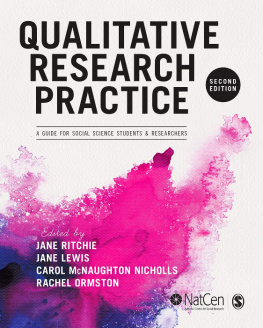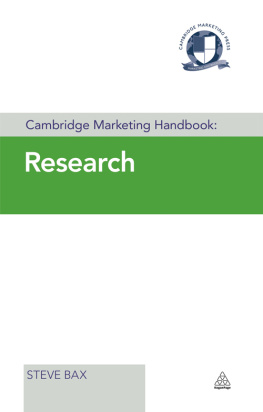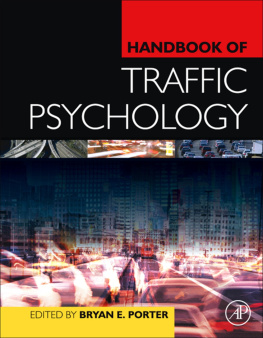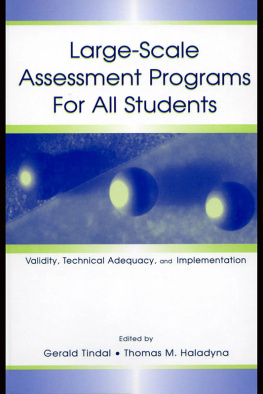DRIVER BEHAVIOUR AND ACCIDENT RESEARCH METHODOLOGY
Human Factors in Road and Rail Transport
Series Editors
Dr Lisa Dorn
Director of the Driving Research Group, Department of Human Factors, Cranfield University
Dr Gerald Matthews
Professor of Psychology at the University of Cincinnati
Dr Ian Glendon
Associate Professor of Psychology at Griffith University, Queensland, and is president of the Division of Traffic and Transportation Psychology of the International Association of Applied Psychology
Todays society must confront major land transport problems. The human and financial costs of vehicle accidents are increasing, with road traffic accidents predicted to become the third largest cause of death and injury across the world by 2020. Several social trends pose threats to safety, including increasing car ownership and traffic congestion, the increased complexity of the human-vehicle interface, the ageing of populations in the developed world, and a possible influx of young vehicle operators in the developing world.
Ashgates Human Factors in Road and Rail Transport series aims to make a timely contribution to these issues by focusing on the driver as a contributing causal agent in road and rail accidents. The series seeks to reflect the increasing demand for safe, efficient and economical land-based transport by reporting on the state-of-theart science that may be applied to reduce vehicle collisions, improve the usability of vehicles and enhance the operators wellbeing and satisfaction. It will do so by disseminating new theoretical and empirical research from specialists in the behavioural and allied disciplines, including traffic psychology, human factors and ergonomics.
The series captures topics such as driver behaviour, driver training, in-vehicle technology, driver health and driver assessment. Specially commissioned works from internationally recognised experts in the field will provide authoritative accounts of the leading approaches to this significant real-world problem.
Driver Behaviour and Accident Research Methodology
Unresolved Problems
ANDERS AF WHLBERG
Uppsala University, Sweden
ASHGATE
Anders af Whlberg 2009
All rights reserved. No part of this publication may be reproduced, stored in a retrieval system or transmitted in any form or by any means, electronic, mechanical, photocopying, recording or otherwise without the prior permission of the publisher.
Anders af Whlberg has asserted his moral right under the Copyright, Designs and Patents Act, 1988, to be identified as the author of this work.
Published by
Ashgate Publishing Limited
Wey court East
Union Road
Farnham
Surrey, GU9 7PT
England
Ashgate Publishing Company
Suite 420
101 Cherry Street
Burlington
VT 05401-4405
USA
www.ashgate.com
British Library Cataloguing in Publication Data
Whlberg, Anders af.
Driver behaviour and accident research methodology : unresolved problems. -- (Human factors in road and rail transport)
1. Traffic accidents--Research. 2. Automobile driving--Psychological aspects.
I. Title II. Series
363.1'251-dc22
ISBN: 978-0-7546-7076-6 (hbk)
ISBN: 978-0-7546-8128-1 (ebk)
ISBN: 978-1-4094-8609-1 (ebk-ePUB)
Library of Congress Cataloging-in-Publication Data
Whlberg, Anders af.
Driver behaviour and accident research methodology : unresolved problems / by Anders af Whlberg.
p. cm. -- (Human factors in road and rail transport)
Includes bibliographical references and index.
ISBN 978-0-7546-7076-6 (hardback) -- ISBN 978-0-7546-8128-1 (ebook) 1. Automobile drivers--Psychology. 2. Traffic accident investigation. I. Title.
TL152.3.W34 2009
363.12'565--dc22
2009018261

Printed and bound in Great Britain by MPG Books Group, UK
Contents
List of Figures
List of Tables
, in the same order
Acknowledgements
The theme of this book was suggested by Professor Lennart Melin (Department of Psychology, Uppsala University), who also contributed ideas and feedback to several of the chapters.
Dr Lisa Dorn (Cranfield University) has also been an important discussion partner regarding many of the ideas presented here, some of which we have published joint papers upon.
Also, my collegues at the Department of Psychology at Uppsala University, who for a decade have been an inspiring scientific background for my various endevours. Amongst all these people, the various librarians who have supplied me with a steady stream of obscure references deserve special mentioning; Siv Vedung, Hans hln and Karl-Oskar Gransson.
The text was language-edited by Charlotte Frycklund, Erna Magnusson and Lisa Dorn.
The following persons have kindly supplied requested information and/or papers upon personal contact, which is gratefully acknowledged:
Professor Winfred Arthur Jr, Texas A&M University.
Professor Russell A. Barkley, Medical University of South Carolina.
Janine McLeod, RTA Library, Roads and Traffic Authority.
Professor Cynthia Owsley, University of Alabama.
Gillian Reeves, Parliamentary Advisory Council for Transport Safety (PACTS).
Dr Jean Wilson, ICBC.
Research Analyst Ming Fang, ICBC.
Also, the following persons have kindly provided feedback on various aspects of the manuscript, which is gratefully acknowledged:
Professor Karel Brookhuis, Delft University of Technology.
Professor Theresa Kline, University of Calgary.
Professor Cynthia Owsley, University of Alabama.
Dr Loren Staplin, TransAnalytics.
Professor Heikki Summala, University of Helsinki.
Professor Ola Svenson, Stockholm University.
The acknowledgement of the contributions of these researchers does not imply that they agree or disagree with the views stated in the book
The language-editing of this work was supported by the Swedish Research Council.
Introduction
It is a very common shortcoming of accident research that the effort expanded and the conclusions reached are not justified by the quality of the data employed. Haddon, Suchman and Klein, 1964, p. 85.
This is a book about assumptions. Within any human endeavour, there seems to exist a shared base of thoughts about how things work, thoughts that are seldom explicitly discussed, but are instead accepted as proven beyond any need for corroboration. This seems to be the state in science too, where knowledge accumulates and facts are added to an ever-increasing base of knowledge, but where some basics are accepted by most without discussion.
For research into individual differences in traffic safety, such a basis of accepted facts seems to have come into existence during the last decades of the twentieth century, regarding certain methods and research findings, despite that this topic and its related research areas are less than a hundred years old, and thus still in their infancy. Globally, we are still far from safe in traffic, and the contributions to safety from research on individual drivers (as opposed to that on roads) to safety are only moderate to date. For example, there is no evidence that any practically useful method for selection of safe drivers has been constructed.
In this book, it will be argued that the weak results from this discipline are to a large degree due to the assumptions made within the field, because they are not only often unfounded, but have also led us astray in our search for knowledge about how drivers behave and cause accidents. This book will show that many studies undertaken are simply misdirected, and the results erroneous, due to (mostly unpronounced) beliefs about some of the basic facts of traffic safety, and the research methods used.
Next page










